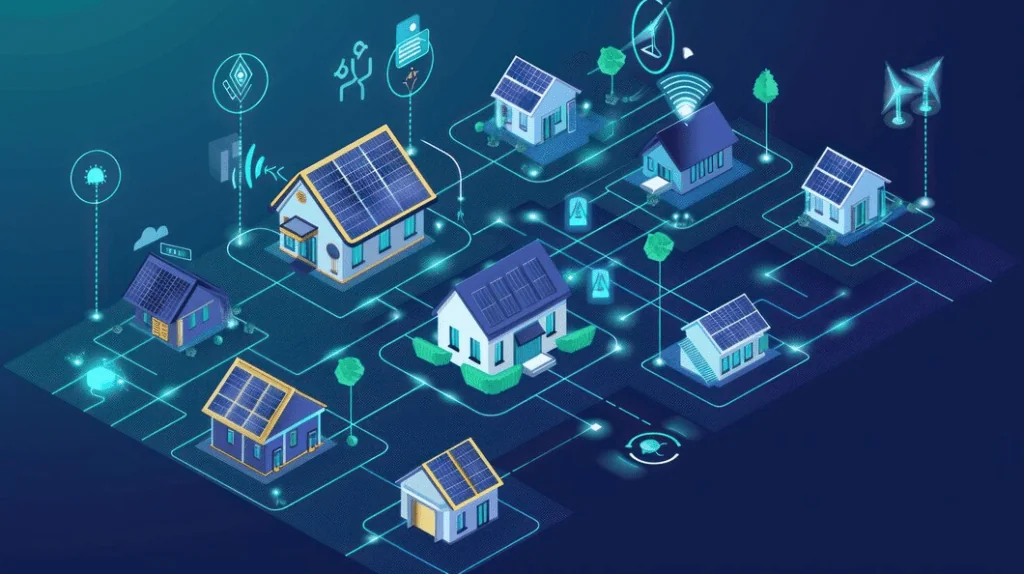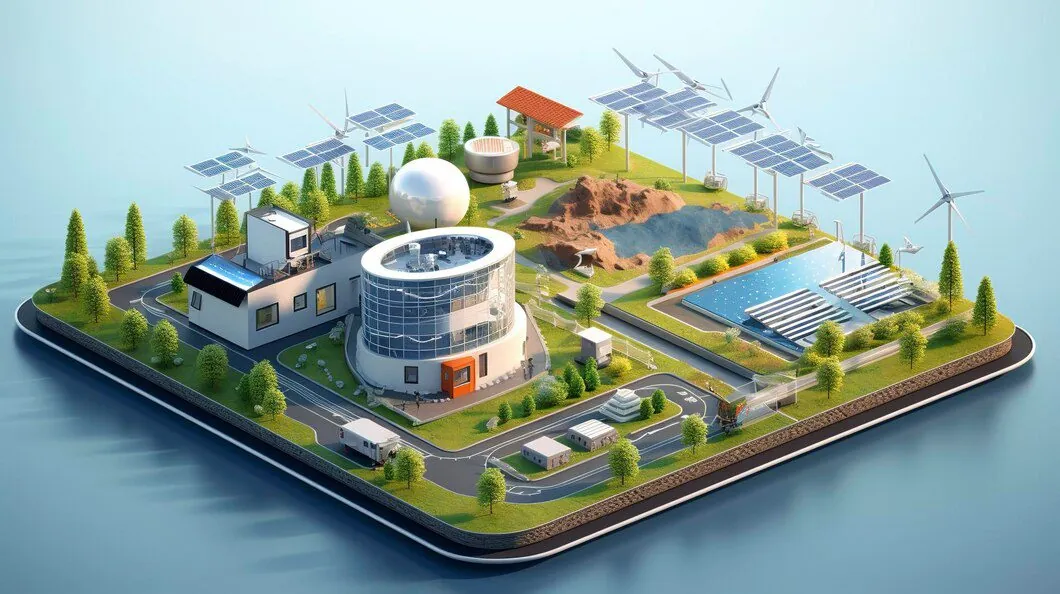Electricity is quite an interesting and an unnoticeable aspect of our daily existence. It provides electricity to our homes, school, and working places and makes it possible to have most of the conveniences of the current society. That of course begs the questions, how does electricity work and who supplies it? Here, I will give brief information about electricity and make you meet some of the companies that provide it. At the end of this lesson, you will thus understand how electricity is produced, how it is distributed, and how it gets to your house.
What Is Electricity?
Essentially, electricity is another kind of energy, which is produced as a result of the flow of electrons. These small particles move through substances like wires through conducting an electric current. This current ranges from merely the lighting systems and home appliances, to the computers and even the television sets. Learning about this kind of energy as to how it moves and transforms to power devices can really make individuals understand the intricate world of the electrical system and that is why it is crucial to work with a reliable supplier of electricity. In other words or more precisely, it interacts with our everyday lives, regularizing functioning of devices that range from little pocket devices to gigantic industrial mechanisms.

How Is Electricity Generated?
Electricity is generated in several ways, but most commonly, it is produced in power plants. Here’s a simple breakdown of the main methods:
- Fossil Fuels: Power plants burn coal, natural gas, or oil to heat water. The steam produced turns turbines, which generate electricity. This method has been used for many years and remains a primary source of electricity, although it comes with environmental concerns due to greenhouse gas emissions.
- Nuclear Energy: In nuclear power plants, uranium atoms are split in a process called fission, releasing a huge amount of energy that heats water to produce steam and generate electricity. Nuclear energy is highly efficient and produces a large amount of power from a small amount of fuel, but it also involves handling radioactive materials and dealing with long-term waste storage.
- Renewable Energy: This includes sources like wind, solar, hydro, and geothermal. For example, wind turbines use the wind to turn blades connected to a generator, while solar panels convert sunlight directly into electricity. These methods are becoming increasingly popular as they offer sustainable and environmentally friendly alternatives to fossil fuels, helping to reduce carbon footprints and combat climate change.
Transmission and Distribution
Once electricity is generated, it needs to be transported to our homes and businesses. This process involves two main steps:
- Transmission: High-voltage power lines carry electricity over long distances from power plants to substations. These lines are designed to handle large amounts of electricity and are crucial for ensuring that power reaches even the most remote areas. The efficiency of this transmission process is vital for maintaining a stable and reliable electricity supply across vast regions.
- Distribution: From substations, electricity is reduced to a lower voltage and distributed through local power lines to our homes. This step ensures that the electricity is safe and suitable for use in residential areas. The distribution network is a complex system of cables and transformers that work together to deliver electricity efficiently and reliably to every household and business.
Choosing the Best Electricity Provider
Choosing an electricity provider can be challenging, given the numerous options available. It’s important to compare different providers to find the one that best meets your needs. For instance, if you live in New South Wales, you might want to find the best energy provider NSW to ensure you get the best rates and services. Each provider offers different plans and benefits, so it’s essential to understand what each one offers before making a decision.
Factors to Consider
When selecting an electricity provider, consider the following factors:
- Cost: Compare the rates and plans offered by different providers. Some providers offer fixed-rate plans, while others have variable rates that can change based on market conditions. Understanding the pricing structure is crucial for budgeting and managing your monthly expenses effectively.
- Customer Service: Look for providers with good customer support. Reliable customer service is important in case you encounter any issues or need assistance with your account. Providers with high customer satisfaction ratings are usually a safer choice.
- Sustainability: If you care about the environment, choose providers that offer green energy options. Many companies now offer plans that include renewable energy sources, which can help you reduce your carbon footprint and contribute to environmental conservation efforts.
- Reputation: Read reviews and ask for recommendations to find reliable providers. Checking online reviews and ratings can give you insight into the experiences of other customers, helping you avoid providers with a history of poor service or unreliable supply.
Popular Electricity Providers
Several companies provide electricity across different regions. Here are some of the well-known providers:
Dodo Electricity
Dodo Electricity is known for offering competitive rates and excellent customer service. They provide a range of plans, including options for green energy. Dodo has built a reputation for being both affordable and reliable, making it a popular choice for many households. Their commitment to customer satisfaction and flexible plan options make them a strong contender in the electricity market.
Origin Energy
Origin Energy is one of the biggest suppliers in the country with several plans and affordable green energy tariffs. It is also recognized for the provision of fast and efficient services as well as environmental conservation. They have a wide network of electricity supply and have green energy plans which directly relate to the environment. Furthermore, they can provide new generation solutions and instruments to save and control the energy consumption.
AGL
AGL is another major provider in Australia, offering electricity and gas services. They provide various plans, including green energy options, and have a strong reputation for customer service. AGL’s long history in the energy industry has made them a trusted name, and their diverse range of plans caters to different needs and preferences. Their focus on sustainability and customer satisfaction sets them apart in a competitive market.
EnergyAustralia
EnergyAustralia offers competitive pricing and a variety of plans, including options for those looking to use renewable energy. They are known for their innovative products and excellent customer support. EnergyAustralia’s commitment to advancing technology and providing efficient energy solutions has earned them a solid reputation. Their comprehensive range of plans ensures that customers can find an option that suits their specific requirements.
How to Switch Providers
Switching electricity providers is simpler than you might think. Here’s a quick guide to help you through the process:
- Compare Plans: Use comparison websites to compare different plans and find the best one for your needs. These websites provide detailed information on pricing, contract terms, and special offers, making it easier to evaluate your options.
- Choose a Provider: Once you’ve found the right plan, contact the new provider to sign up. They will guide you through the process and handle most of the administrative tasks, ensuring a smooth transition.
- Notify Your Current Provider: Inform your current provider that you’re switching. They’ll arrange the final meter reading and send you the final bill. This step is important to avoid any overlap or double billing during the transition period.
- Enjoy Your New Plan: Your new provider will handle the rest, ensuring a smooth transition with no interruption to your service. You can start enjoying the benefits of your new plan and any cost savings or additional services it offers.
The Future of Electricity
The future of electricity looks promising with advancements in technology and a growing focus on renewable energy. Innovations such as smart grids, energy storage solutions, and increased use of renewable sources are set to transform the way we generate, distribute, and consume electricity.
Smart Grids
Smart grids use digital technology to monitor and manage the flow of electricity. This allows for more efficient distribution and helps prevent outages. Smart grids also enable consumers to monitor their usage in real-time, promoting energy conservation. By optimizing the electricity distribution network, smart grids can reduce energy waste and improve overall efficiency, leading to a more sustainable energy future.

Energy Storage
Energy storage solutions, such as batteries, are becoming increasingly important. They allow for the storage of excess energy generated from renewable sources, ensuring a steady supply even when the sun isn’t shining or the wind isn’t blowing. These storage systems can be integrated into homes and businesses, providing backup power during outages and reducing reliance on the grid during peak demand periods.
Increased Use of Renewable Energy
The shift towards renewable energy sources is accelerating. Solar, wind, and other renewables are becoming more affordable and efficient, reducing our reliance on fossil fuels and helping combat climate change. Governments and businesses worldwide are investing in renewable energy projects, driving innovation and expansion in this sector. As technology advances, the cost of renewable energy continues to decrease, making it a more viable and attractive option for consumers and providers alike.
Key Takeaways
- Understand Electricity: Knowing how electricity is generated and transmitted helps you make informed decisions. A basic understanding of the electricity supply chain can empower you to choose the best provider and manage your energy usage more effectively.
- Compare Providers: Always compare different providers to find the best rates and services. By taking the time to evaluate your options, you can find a plan that offers the best value and meets your specific needs.
- Switching is Easy: Switching electricity providers is simple and can lead to better rates and service. Don’t be afraid to explore new options if you’re not satisfied with your current provider. The process is straightforward, and the potential benefits make it worthwhile.
Thus, knowledge of how electricity functions and which firms offer this service will assist people in making the right decision in favor of their families or enterprises. Provider’s comparison can be done with the help of various aspects such as cost, customer service and sustainability leading to the selection of the most suitable electricity plan. With electricity’s future looking this sunny, there’s no better time than now to educate yourself and switch to a provider that fits your needs. For more blogs click here.
